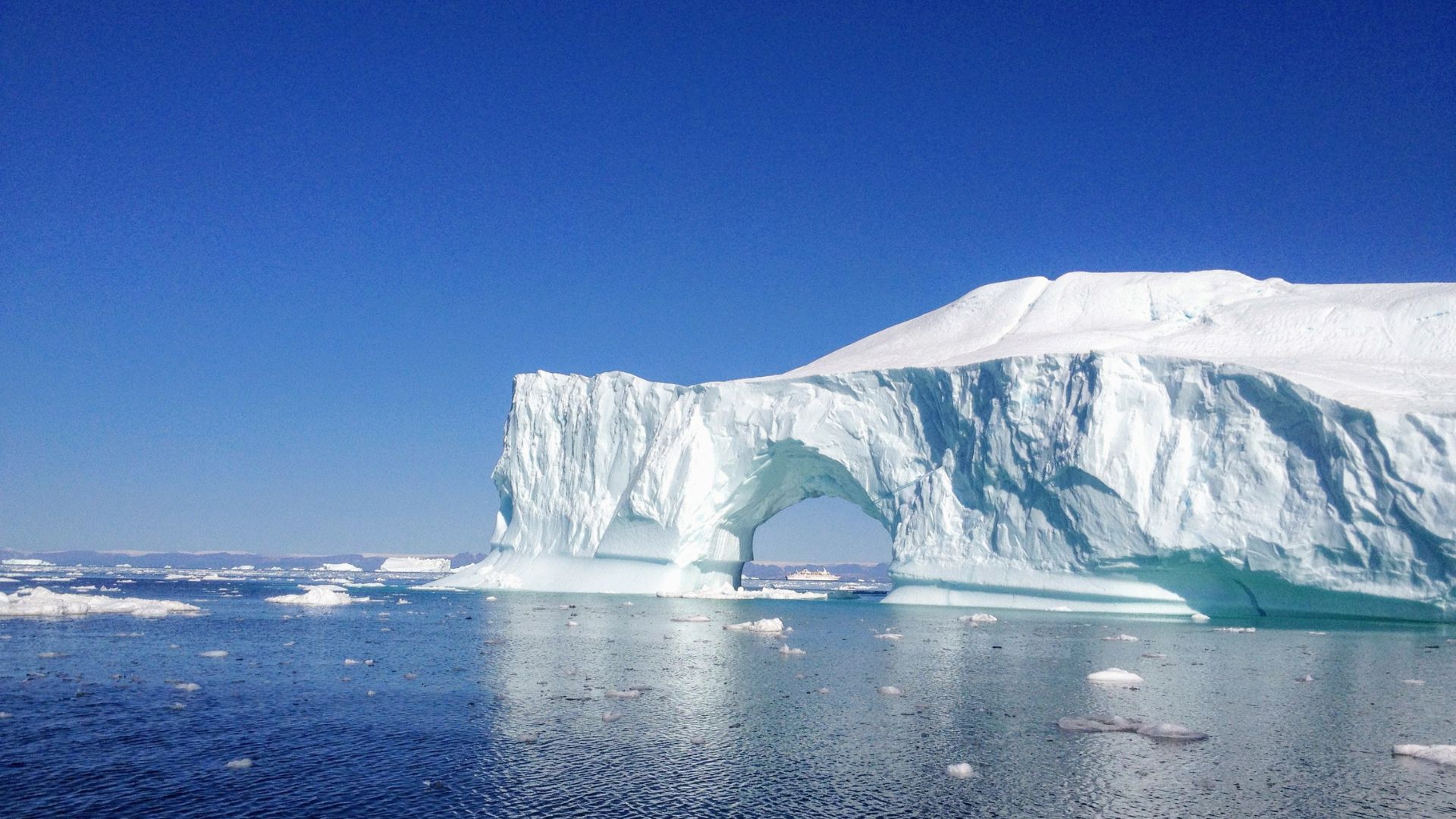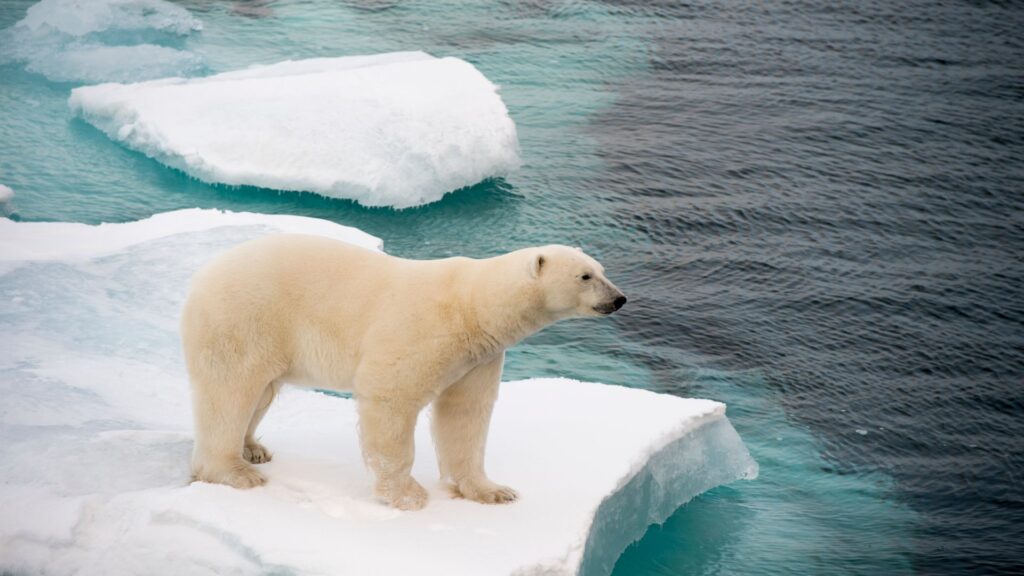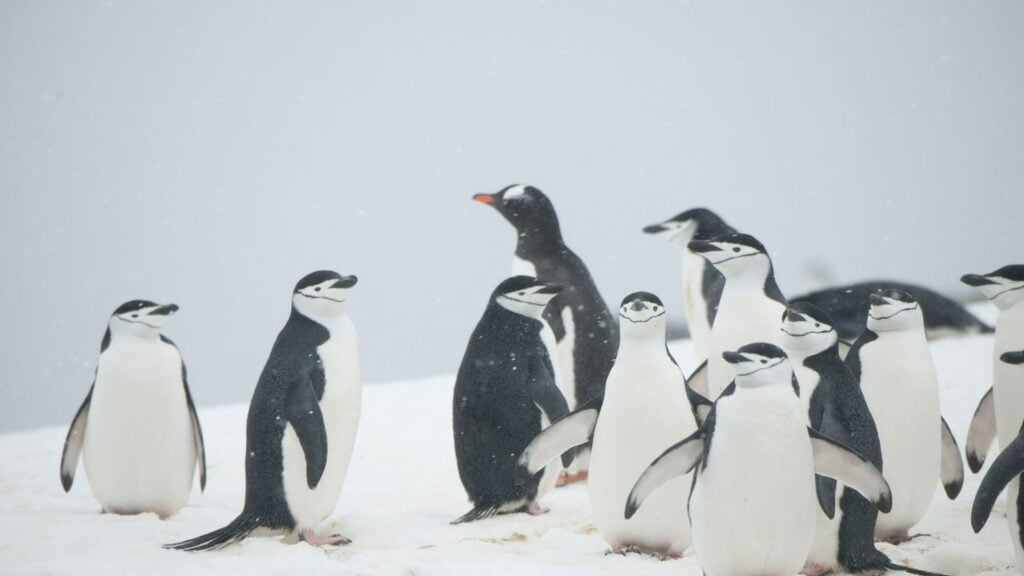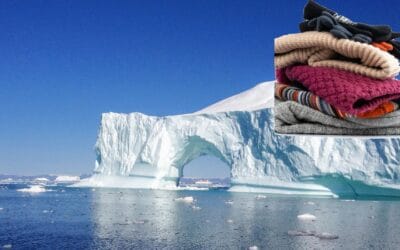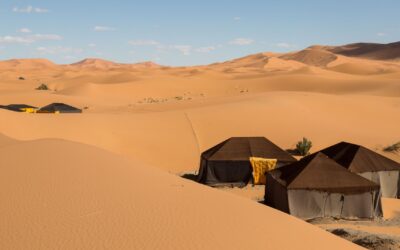The Arctic and Antarctic regions present some of the most extreme and challenging environments on Earth. These polar deserts share the common characteristic of low precipitation, receiving less than 250 mm (10 in) of precipitation annually. To survive in these harsh environments, some specific knowledge and skills can come in handy. With this in mind, here’s a guide on how to survive in an arctic environment that can be of use if you are planning an expedition or considering moving to the North or South Pole.
What’s it like in a cold desert?
When we think of desert environments, we typically think of hot deserts; this type of desert requires some survival skills as well and we have a hot desert survival skill guide for you. For the many of you who didn’t know, a desert is not defined as a place that lacks vegetation and is rocky or sandy but as a place that receives less than 250 mm (10 inches) of precipitation annually. As such, the Arctic and the Antarctic regions are also deserts, polar ones to be specific. With its vast ice-covered continent, Antarctica is the largest desert in the world by area.
Both regions have long, harsh winters and short, cool summers, with temperatures in the Arctic ranging from -40°C to 0°C (-40°F to 32°F) and in the Antarctic from -60°C to -20°C (-76°F to -4°F). The Arctic is characterized by a mix of ice-covered ocean, permafrost, and tundra. During summer, temperatures can rise just above freezing, causing partial melting of sea ice.
In contrast, the Antarctic remains largely ice-bound year-round, with its ice sheets covering mountains and flat terrains alike. These extreme conditions result in unique geographical features such as glaciers, icebergs, and vast stretches of barren, rocky ground.
Despite the harsh conditions, both the Arctic and Antarctic support a variety of wildlife adapted to their extreme environments. In the Arctic, you will find polar bears, Arctic foxes, seals, walruses, and various seabirds like the ivory gull. The Antarctic is home to different species, including Emperor and Adélie penguins, seals (such as the Weddell and leopard seals), and numerous seabirds like skuas and petrels.
The Arctic is inhabited by indigenous peoples such as the Inuit, Sámi, and Nenets, who have adapted their lifestyles to the extreme conditions. In contrast, the Antarctic has no permanent human residents. It hosts researchers and scientists who conduct research studies for which Antarctica is the ideal environment, including in areas that impact our understanding of the region, climate change, and space exploration.
Both regions present unique challenges. In the Arctic, the melting permafrost and shifting ice pose significant risks, while in the Antarctic, the isolation and katabatic winds add to the extreme cold conditions.
How to dress for exploring an arctic desert
The key to dressing appropriately in such extreme cold is layering. Layering helps trap warm air close to your body while allowing moisture to escape, which prevents you from getting wet and cold. Here’s a breakdown of the essential layers:
- Base Layer: This layer should be moisture-wicking to keep sweat away from your skin. Materials like merino wool or synthetic fabrics are ideal.
- Insulating Layer: This layer retains body heat. Fleece, down, or wool are excellent choices as they provide good insulation without being too bulky.
- Outer Layer: This should be windproof and waterproof to protect you from the elements. Look for outerwear made from Gore-Tex or similar materials that provide breathability while blocking wind and moisture.
Special attention should be given to extremities. Insulated gloves or mittens, thermal socks, and insulated boots are essential to prevent frostbite. A good hat or balaclava will protect your head and face from the cold.
To learn more, check out our full guide on how to dress for an arctic environment.
Gear that can come in handy when exploring an arctic desert
Tools that you might find of use while exploring an arctic environment include the following:
- Navigation Tools: GPS devices, maps, and compasses can help you navigate the often featureless and snow-covered terrain. Visibility can drop quickly due to sudden snowstorms, so having reliable navigation tools is very important
- Shelter: A high-quality, four-season tent that can withstand strong winds and heavy snow is crucial. Snow caves or igloos can also be built as emergency shelters, providing excellent insulation from the cold.
- Sleeping Gear: Insulated sleeping bags rated for extreme cold, along with sleeping pads to insulate from the cold ground, are necessary to ensure you stay warm while resting.
- Cooking Equipment: Portable stoves and fuel that function in sub-zero temperatures are needed for melting snow for water and cooking food. Ensuring you have a reliable heat source is important for both hydration and nutrition.
- Safety Equipment: First aid kits, emergency flares, and personal locator beacons (PLBs) are necessary for addressing injuries and signaling for help if needed.
How to stay warm and safe while exploring a cold desert
Despite the cold temperatures, the dry air and physical exertion can lead to dehydration. As such, you will want to drink plenty of water, even if you don’t feel thirsty. Melting snow or ice is the primary source of water in the Arctic, but it’s important to purify it by boiling it to eliminate harmful pathogens. In some cases you will want to avoid eating snow directly, as it can lower your core body temperature significantly, leading to hypothermia.
Keeping your body warm in the Arctic requires consuming a high-calorie diet to sustain energy and generate heat. Foods rich in fats and proteins are ideal because they provide long-lasting energy. Arctic explorers often consume between 4,000 and 6,000 calories per day to meet the high energy demands of moving through snow and dealing with the cold.
Wind can significantly increase the risk of hypothermia by stripping away body heat. Building windproof shelters or snow walls can protect you from the wind. Natural terrain features like hills or large rocks can also serve as windbreaks. Always turn your back to the wind to minimize exposure and heat loss. Windproof clothing with secure seals at the openings can further help retain body heat and protect against wind chill.
No need to say, monitor weather forecasts regularly and be prepared to alter your plans based on incoming storms or extreme conditions. Having a reliable communication device, such as a satellite phone, can also help you stay updated and call for help if needed.
How to navigate an arctic terrain
Navigating icy surfaces in a cold desert can be quite fun but requires a thorough understanding of ice dynamics. You will want to be aware of different types of ice, such as sea ice and freshwater ice, and how they react to changes in temperature and pressure. Always test the ice thickness before venturing onto frozen bodies of water. Using ice picks for self-rescue is a must in case you fall through the ice. Additionally, carrying a long pole can help distribute your weight more evenly, reducing the risk of breaking through thin ice.
Flat light conditions, where the lack of shadows makes it difficult to discern contours in the snow, can easily disorient you. To manage this, wear goggles with contrast-enhancing lenses, and use natural markers like trees or rocks whenever possible. In case of whiteouts, it’s often safer to stop and wait for visibility to improve rather than risk losing your way.
Traveling in pairs or groups enhances safety by providing mutual support in case of an accident or extreme weather conditions. Sharing the workload can also reduce individual fatigue, making it easier to manage the physical demands of this challenging environment.
How to manage wildlife encounters
Polar bears are apex (i.e., top) predators and can pose a significant threat in the Arctic due to their size and strength. Unlike other bears, polar bears may consider humans as potential prey (!), which means it is important to know how to avoid and survive encounters. Polar bears primarily hunt seals and are good swimmers, often traveling vast distances across sea ice. They have a keen sense of smell and can detect prey from up to 32 km (20 mi) away.
To minimize the risk of encountering polar bears:
- Avoid Known Bear Areas: Stay away from areas where seals are present or known bear den sites.
- Camp Safely: Set up camp in open areas where you can see approaching bears. Use electric fences or perimeter alarms around your camp.
- Travel in Groups: There is safety in numbers. Traveling in groups can deter bears and make you more visible.
- Stay Vigilant: Always be aware of your surroundings and look for signs of bears, such as tracks or scat.
If you encounter a polar bear:
- Carry Bear Deterrents: Bear spray is highly effective and should be readily accessible. Other deterrents include air horns and flare guns.
- Stay Calm and Don’t Run: Running can trigger a predatory response. Instead, slowly back away while keeping the bear in sight.
- Watch for Warning Signs: Polar bears show curiosity by sniffing the air, staring, and huffing. If the bear notices you, try to move away downwind so your scent is less detectable.
- Make Yourself Big: Try to appear larger by waving your arms and making loud noises to scare the bear away. If you’re with others, group together to look more formidable.
- Be Prepared to Fight: If the bear charges, use any available objects to defend yourself. Aim for the bear’s face and nose. Playing dead does not work with polar bears.
Building and maintaining shelters in a cold desert
Building a reliable shelter is one way to protect yourself against extreme cold and harsh weather conditions. Several types of shelters can be constructed using available materials like snow, tarps, and natural elements.
Igloos
Igloos are iconic Arctic shelters known for their impressive insulation properties. They are constructed using blocks of hard-packed snow. The process involves cutting and shaping the snow blocks into a spiraling dome. When built correctly, the interior temperature of an igloo can rise above freezing from body heat alone, even when external temperatures are far below zero. However, building an igloo requires the right type of snow and some skill in shaping the blocks. Consider checking our guide on how to build an igloo in seven steps.
Quinzhees
A quinzhee is a simpler alternative to an igloo. It is essentially a hollowed-out mound of snow. To build a quinzhee:
- Pile snow into a mound about 2.4 m (8 ft) high.
- Let the mound settle and harden for about an hour and a half.
- Insert sticks about 60 cm (2 ft) into the mound to help gauge wall thickness.
- Hollow out the mound from the downhill side, stopping when you reach the ends of the sticks.
- Create a small ventilation hole in the roof for airflow.
Snow caves
Snow caves are another viable shelter option, especially in deep snow areas. These shelters involve digging into a snowbank and creating a tunnel that leads to an elevated sleeping platform. A key feature of snow caves is the “cold well,” a lower area where cold air can collect, keeping the upper sleeping platform warmer. Ventilation holes are crucial to prevent carbon dioxide buildup.
To maintain your shelter in the Arctic:
- Ventilation: Ensure there is adequate ventilation to prevent condensation and carbon dioxide buildup, especially in enclosed spaces like igloos and snow caves.
- Insulation: Use natural materials like boughs or grasses to insulate the floor of your shelter, keeping you off the cold ground and retaining body heat.
- Regular Checks: Inspect your shelter regularly for structural integrity, especially after heavy snowfall or wind, and reinforce as necessary.
How to explore the Arctic and Antarctic deserts
Now, after reading so many survival tips, you may be more in the mood to explore the Arctic and Antarctic deserts than ever before. You can start your adventure by researching the specific region you plan to explore. Understanding the climate, terrain, and potential hazards can be useful.
Then, you will need to plan your route, accommodation, and transport. This includes securing permits, arranging for transport (such as icebreakers or helicopters), and ensuring you have the right equipment.
The physical demands of polar expeditions can be extreme. Depending on what kind of trip you are going to do, it may be necessary that you are in excellent physical condition and have undergone cold-weather training.
In most cases, it will probably be easier to explore the polar deserts on a guided tour. In the Arctic, for example, expeditions often focus on observing polar bears, Arctic foxes, walruses, and various bird species. Other tours focus on helping you to observe the Northern Lights. Some of these tours also offer activities like dog sledding, snowmobiling, and ice climbing. If you find any of these appealing, feel free to check out some North Pole tours you might like.
One thing you might see while on an Arctic cruise
To visit Antarctica, you will typically need to take a cruise that will take you to see penguins, seals, and whales. The cruises often include shore landings and Zodiac excursions for close-up views of the wildlife and scenery. Some expeditions include visits to scientific research stations where you can learn about the ongoing scientific work in Antarctica. Activities like sea kayaking, ice climbing, and even polar camping are also available. If interested, here are some Antarctic tours you can take a look at.
A bunch of Antarctican penguins
Bottom line: Exploring the Arctic and Antarctic may be an ice-cold blast
Venturing into the icy polar deserts of the Arctic and Antarctic isn’t your average “let’s go hiking” scenario—it’s like going on a frozen safari where penguins are your neighbors and snowstorms are your wake-up call. Surviving these chilly wastelands? Oh, that’s a whole different ball game. You’ll need more than just a warm jacket; we’re talking impressive igloo-building skills and a sixth sense for dodging frostbite.
Whether you’re conquering the wild on your own or opting for a cruise with heated cabins (we won’t judge), surviving the polar deserts is one cool story to bring back home and one more survival skill for trekkers to add to your repertoire. Just don’t forget your mittens.

